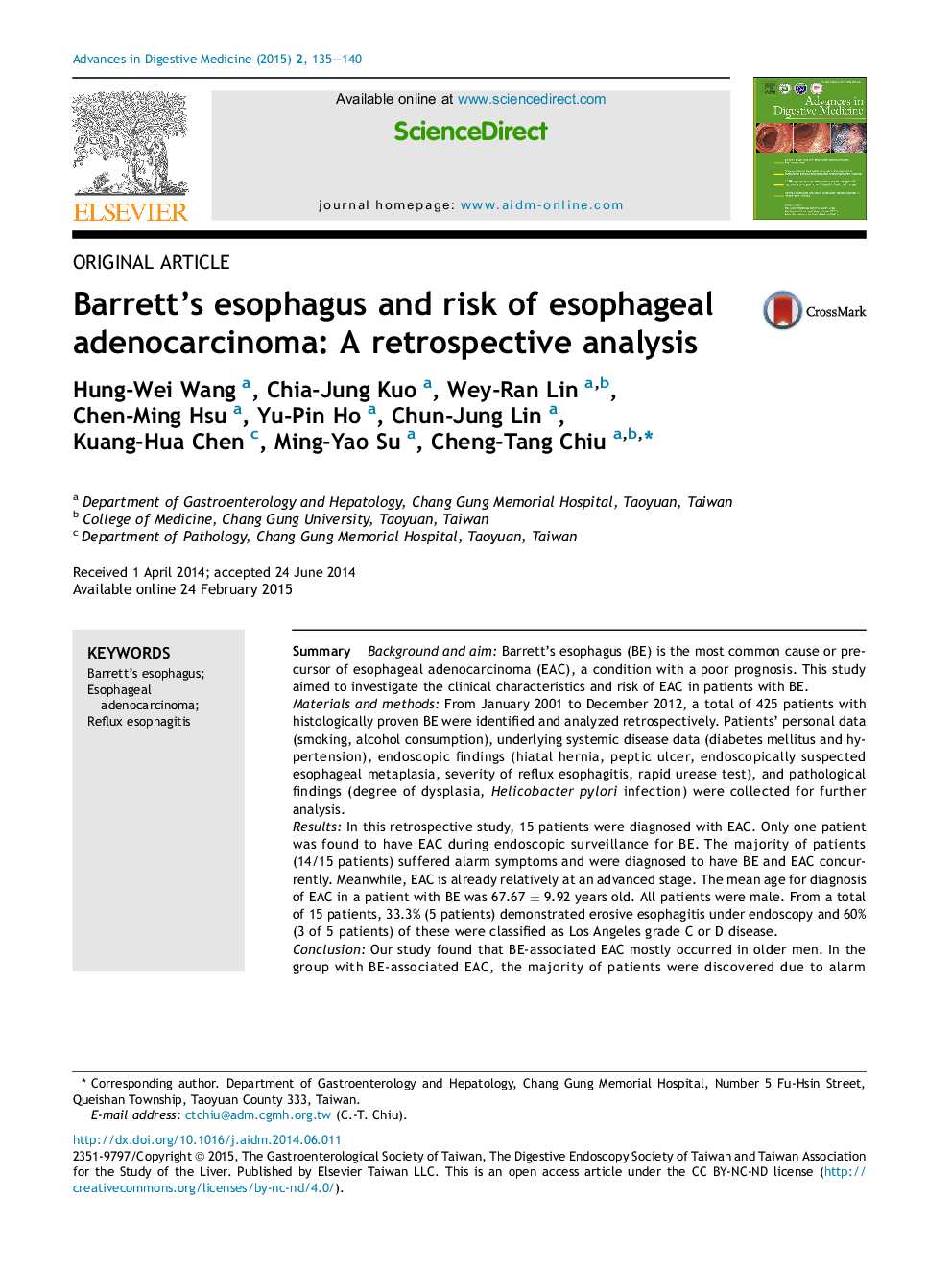| Article ID | Journal | Published Year | Pages | File Type |
|---|---|---|---|---|
| 3278524 | Advances in Digestive Medicine | 2015 | 6 Pages |
SummaryBackground and aimBarrett's esophagus (BE) is the most common cause or precursor of esophageal adenocarcinoma (EAC), a condition with a poor prognosis. This study aimed to investigate the clinical characteristics and risk of EAC in patients with BE.Materials and methodsFrom January 2001 to December 2012, a total of 425 patients with histologically proven BE were identified and analyzed retrospectively. Patients' personal data (smoking, alcohol consumption), underlying systemic disease data (diabetes mellitus and hypertension), endoscopic findings (hiatal hernia, peptic ulcer, endoscopically suspected esophageal metaplasia, severity of reflux esophagitis, rapid urease test), and pathological findings (degree of dysplasia, Helicobacter pylori infection) were collected for further analysis.ResultsIn this retrospective study, 15 patients were diagnosed with EAC. Only one patient was found to have EAC during endoscopic surveillance for BE. The majority of patients (14/15 patients) suffered alarm symptoms and were diagnosed to have BE and EAC concurrently. Meanwhile, EAC is already relatively at an advanced stage. The mean age for diagnosis of EAC in a patient with BE was 67.67 ± 9.92 years old. All patients were male. From a total of 15 patients, 33.3% (5 patients) demonstrated erosive esophagitis under endoscopy and 60% (3 of 5 patients) of these were classified as Los Angeles grade C or D disease.ConclusionOur study found that BE-associated EAC mostly occurred in older men. In the group with BE-associated EAC, the majority of patients were discovered due to alarm symptoms, at the same time as esophageal adenocarcinoma had already developed. Further prospective study is needed to stratify the risk of disease progression in BE patients.
